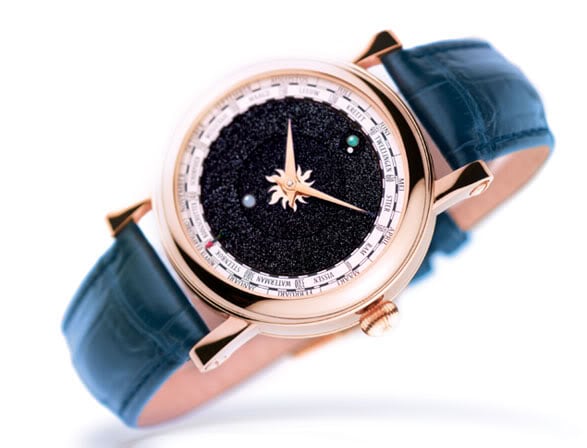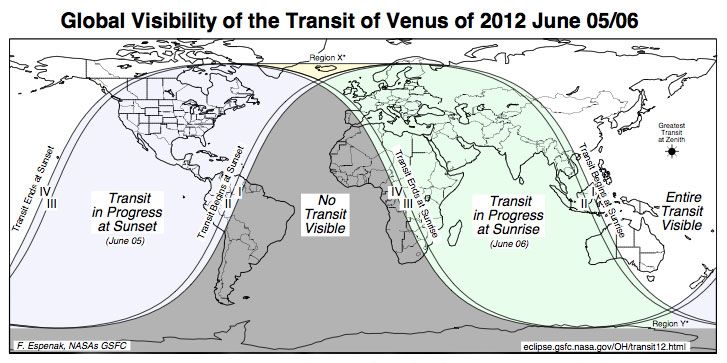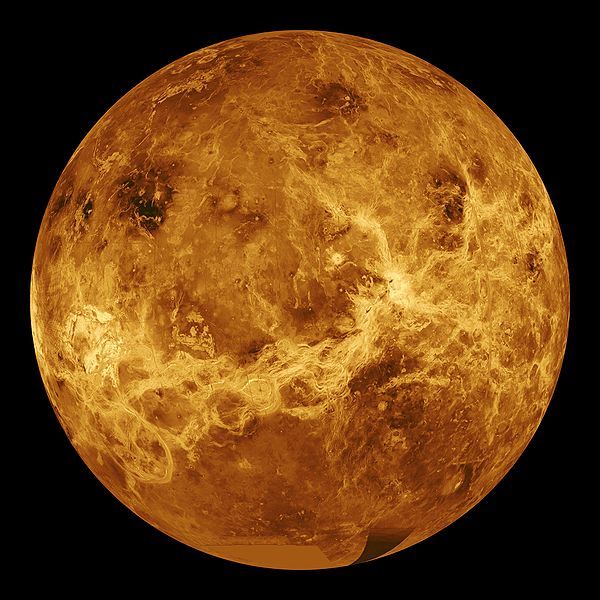Very Rare Astronomical Phenomenon on June 5th and 6th – Transit of Venus

The transit of Venus doesn’t occur often. It’s quite similar to a sun eclipse however much more rare. The next transits are due on 11 December 2117 and on 8 December 2125. So take a moment to enjoy this rare astronomical phenomenon!
You can see it in the sky (if the sky is cloudless and you have protection for your eyes!!) or on the Christiaan van der Klaauw Venus watch! Maybe that’s a safer way to observe the transit of Venus and keep track of upcoming astronomical phenomena.

The transit of Venus, when the planet Venus will appear as a small, dark disk moving across the face of the Sun, will be visible will begin at 22:09 UTC on 5 June 2012, and will finish at 04:49 UTC on 6 June. Depending on the position of the observer, the exact times can vary by up to 7 minutes.The following image (courtesy Wikipedia) shows when and where to have a look at the sun. And don’t forget to use some sort of eye protection!

Apart from the indication of time, the Venus shows the date and the sign of the Zodiac in which the Sun is located. The position of Venus and the position of the Earth and the Moon are also shown on the dial. The date hand, Venus and the Earth turn anti-clockwise with the Month. The date is indicated by the red hand on the outer scale.

The Sun is positioned in the center of the dial. The red hand and the Earth (blue dot on the dial) are connected with each other, so that the hand and the Earth are always diametrically opposite each other.
On the second scale from the outer rim a division has been made showing the twelve signs of the Zodiac. On this scale, the red hand indicates the sign of the Zodiac in which the Sun is located.
The orbit of Venus (larger white dot on dial) lies within the orbit of the Earth around the Sun. The position of Venus as seen from the Sun (heliocentric) can be read directly. To determine the position of Venus from the Earth (geocentric), an imaginary line has to be drawn between the Earth and Venus. Parallel to this line, another line has to be drawn from the Sun in the centre of the dial. Now you can see, on the scale of the Zodiac, in which sign Venus is as seen from the Earth.
The Moon revolves around the Earth. In relation to the Sun, the Moon makes one orbit in 29.53 days. If the Moon is exactly between the Sun and the Earth (like in the photo above), it is a ‘new Moon’. If the Earth is between the Moon and the Sun, it is a full Moon.
The inner planet Venus
Seen from the Sun, Venus is the second planet of our solar system. This planet is named after Venus, the Roman goddess of love. Seen from the Earth, Venus is, after the Sun and the Moon, the clearest object in the sky and has about the same size, mass and composition as the Earth.
Seen from the north, Venus rotates – unlike the other planets – clock-wise about its axis. Therefore, on Venus the Sun rises in the west.

Venus moves around the Sun in an orbit that is within the orbit of the Earth around the Sun. That is why we call Venus an “inner planet”, unlike Mars, which is an outer planet. The orbit of Venus is, like that of the Earth, more or less circular. The orbit of Venus is at an angle of 3.38 degrees to the orbit of the Earth around the Sun. The distance of the Earth and Venus from the Sun varies from 42 million to 257 million kilometers. The Earth revolves around the Sun and makes one complete orbit in 365.24 days. One complete orbit of Venus around the Sun takes 224.70 days.
As Venus is an inner planet, it can always be found near the Sun. To be precise, never more than 47 degrees farther away from the Sun. If Venus is east of the Sun, it will set after the Sun. In this case, Venus is an ‘Evening star’. If, however, Venus is west of the Sun, it will rise before the Sun and will be a ‘Morning star’.
More information about the transit of Venus can be found here on Wikipedia.
Information about Christiaan van der Klaauw’s Venus watch and other astronomical timepieces, can be found at the Chistiaan van der Klaauw website.
This article is written by Frank Geelen, executive editor of Monochrome Watches. Text and images kindly borrowed from Wikipedia, Christiaan van der Klaauw and Amsterdam Watch Company.




2 responses
slight typo – next transits due 2117 and 2125
Phenomenal watch concept, love your idea. I appreciate the moon phase as well.